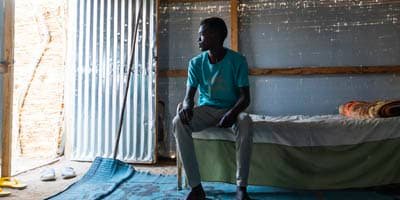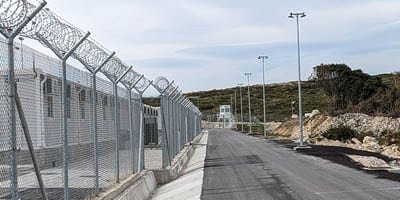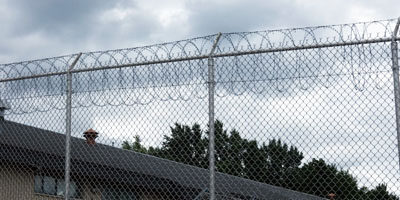Listen to the companion podcast here
In a world where heterosexuality is the norm, the act of coming out as LGBTQ+ is to declare both who you are and who you are not. To declare that you are not the default. This act of self-determination should be empowering as it’s to say that you are making your own choices about how you want to live your life.
But for many, coming out as LGBTQ+ is to risk state-enabled violence, criminalization, and stigmatization. It is still illegal for LGBTQ+ people to live openly in 69 countries today, and it is still unsafe to be openly queer in many more. This is the reality of people seeking asylum from persecution of their sexual orientation or gender identity. For these individuals, coming out as LGBTQ+ quickly shifts from being something that should be avoided at all costs to a matter that you must prove in a court of law. This is the most critical coming out story of them all: the story of being an LGBTQ+ refugee today.
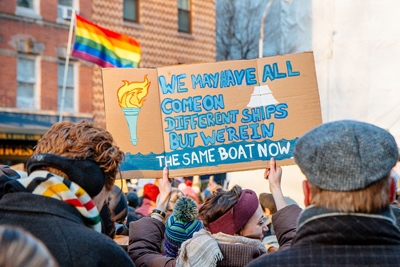
Canada is one of the countries that allow people to claim asylum from persecution of their sexual orientation and gender identity but, for most of these refugees, their path is highly uncertain, lengthy, and extremely demanding both physically and mentally. LGBTQ+ refugees face a unique set of challenges and vulnerability in terms of travel to Canada, a lack of community-specific resources upon arrival, and a refugee claims process that is intimate by nature. Their credibility as eligible refugees depends on how well they can prove their queerness and how openly they can recount the details of their personal life. From hiding one’s queerness every day out of self-protection, LGBTQ+ refugees must come out to refugee boards, lawyers, and judges in a way that is ‘convincing enough’.
The need to flee
“It mostly come from family and, not really my friends, but classmates and teachers. Majority adults. I can excuse the kids my age, but some of the adults. I guess that’s where it struck more,” Isaac, who now lives in Montreal, spoke with me about the homophobia he faced growing up in Guyana. Isaac is an animated speaker and told his life story with grace and strength. I was surprised when he told me that his classmates and teachers thought of him as a quiet child. In his youth, Isaac silenced himself as a way of self-protection. “Because if I stay quiet and don’t speak at all, then people wouldn’t have a reason to say ‘oh, you’re speaking like a girl and being too girly’. I had to be quiet because if I’m not quiet, if I’m expressive, I’m hearing all this hateful stuff,” he said.
Throughout the world, homophobia has a way of intimidating its targets into silence. As a way of survival, LGBTQ+ individuals who live in dangerously homophobic societies limit their self-expression to avoid harassment, attacks, prison time and – in eleven countries today – the death penalty. Hiding their identity from others has severe mental health impacts and is sometimes impossible to achieve anyway.
LGBTQ+ individuals hide who they are in places where it is unsafe or illegal to come out, and often do this without being able to confide in others. “It’s just you alone,” Isaac said. “You couldn’t tell your mom, couldn’t tell nobody.”
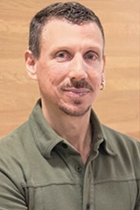
I asked Nick Mulé, a Canadian activist and researcher on social exclusion of gender and sexually diverse populations, for his insight into what it is like when an individual’s queer identity is suspected. “The repercussions can be really severe, from threats to their family members, being threatened of losing their jobs, being attacked, and if they are detained, they can be tortured,” he said. “And if they’re in one of [several] countries, they could actually lose their life. They can be killed on the street, for that matter, without the state being involved.”
In Isaac’s case, when he realized his life was in danger he became convinced that seeking asylum in another country was his only option. “You feel like there are two things that you know you have to do: you run or you die,” he said. “That’s basically it. So, I didn’t want to die.”
The uncertain path to safety
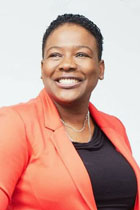
Escaping violence in Jamaica, Lauren Young left home to claim asylum in Canada eight years ago. She now works at the Rainbow Railroad, a Canadian organization helping LGBTQ+ individuals escape homophobic persecution. Young said obtaining a travel visa is one of the main barriers to reaching safe countries for LGBTQ+ refugees.
For those who have no time to spare, arriving at a safe country before applying for asylum is a common risk taken. But reaching Canada is not simple. Arriving at a Canadian port of entry all rides on one thing that most Canadians take for granted: a travel visa.
Many of the countries that have discriminatory laws against LGBTQ+ people are also countries that Canada restricts from boarding a plane without a visa, and people from countries throughout South America, Africa, the Middle East and North Africa require prior clearance before booking a flight. Canada is looking for proof that travellers will return to their home countries, such as jobs and a dwelling to go back to. It is extra challenging for marginalized queer people to meet Canada’s visa restrictions, including proof of employing and housing.
Young says that they are pushed to the “outskirts of society and already displaced within their own environment,” and that the persecution they face can lead them to drop out of school and become homeless and jobless. “We have to make them look like they can successfully complete such a travel.” To make the first step toward safety, LGBTQ+ refugees have a lot to prove to border authorities.

Norma Lize is a trans refugee activist from Lebanon, one of several countries where it is illegal for trans and gender non-conforming people to live openly. She told me about the difficulties some of her friends and clients have faced when going through this process. Beyond logistical difficulties, trans people are at risk of violence and criminalization just by showing up at immigration offices to apply for visas or to attend immigration interviews. Gender non-conforming and trans people encounter an additional barrier when their gender identity or expression does not match the photo on their passport.
In Isaac’s case, seeking asylum was not an easy path. He first applied for a US travel visa from Guyana, but after months of waiting it was denied. In the end, Isaac found his opportunity by joining a local trans organization, and then was offered funding to attend a queer youth conference in Montreal. With this travel visa, Isaac arrived in Canada and applied for asylum in 2022.
Coming out in Canada
Upon arrival or shortly after, LGBTQ+ refugees must disclose their grounds for asylum – that they are persecuted because that they are queer. Border agents and members of the Immigration, Refugee Board must judge a refugee case by the credibility of a person’s story. Is this person really who they say they are? People seeking asylum are expected to be immediately forthcoming, extremely detailed in their disclosures, and provide as much supportive evidence to their identity and persecution as possible. How does this affect LGBTQ+ refugees uniquely?
For one thing, this may be someone’s first time coming out. Mulé is outspoken about how much is expected of LGBTQ+ refugees in terms of their coming out at the border. “When one understands this from a perspective of someone who’s from a place in which they were persecuted, based on their sexual orientation, or gender identity, we have to be realistic about how forthcoming they’re going to be about that.”
Norma Lize talked to me about how, since Canada will be the first place where they can move and live freely, it is then that the contrast between living in the closet to coming out convincingly is so stark, and there is no turning back. If a claim gets denied, LGBTQ+ refugees are at higher risk of being outed and persecuted more violently if they return to their home country.
For people who seek asylum in Canada because they haven’t been able to live their authentic lives ever before, providing evidence to support their claim is challenging. Lize said, “I remember one of my friends back in 2017, when he moved to Canada to apply, he only had one picture of him and his partner back then. And that was the only evidence that he could provide. Once he landed in Canada, he had to go to gay clubs and download few dating apps, take screenshots, take the receipt from the gay club, and attach it as evidence as well.”

David A.B. Murray, a researcher and professor who studies nationalism and queer theory, brings up another point about how Canadian cultural norms affect asylum seekers. “We work in Canada under this narrative of multiculturalism, that we’re the destination for queer asylum seekers because they want to come here and be free. But what those media narratives didn’t talk about was all the people who weren’t getting through and why they didn’t get through,” he told me.
LGBTQ+ refugees have a harder time getting their claims approved when their stories do not fit the narrative of the victimized and queer refugee. Both Murray and Mulé refer to this as an aspect of homonationalism. Mulé described it “in terms of imposing our notions of sexual orientations outside of the norm in the coming out process onto people who were raised and socialized outside of North America”. For example, being married and having children would undermine asylum claims because it made them not look like what a Canadian understands as a stereotypical gay person. Although the Immigration, Refugee Board reformed the guidelines, “Proceedings Before the IRB Involving Sexual Orientation, Gender Identity and Expression, and Sex Characteristics” in 2017 to be more culturally inclusive, stereotypes have legacies.
Evidence challenges in the claims process

So how does one prove that they are gay in a court of law upon arrival to Canada? Nicholas Woodward, a lawyer working on immigration and refugee cases in Toronto, spoke with me about the unique challenges queer refugees face in their asylum claim process, explaining that it is indeed the question of how to prove their sexual orientation and gender identity that requires creativity in building cases. The evidence could include letters of attestation from family members or partners, screenshots of dating app conversations, photos at gay pride events, police reports of homophobic attacks, or proof of involvement in a queer organisation.
Lauren Young pointed out that, for people living in highly homophobic societies, it is rare for anyone to have documentary evidence of something that they can be violently persecuted for. She says that in some countries – like Afghanistan under the Taliban today – religious police may search cellphones at will for evidence of conversations, photos, or social media presence alluding to someone’s queer sexual orientation or gender identity. In situations like these, LGBTQ+ people will delete this data as self-protection to avoid imprisonment. Victims of homophobic violence are reluctant to file police reports for fear of unwanted attention or because they feel no justice would come of it. Such was the case for Isaac, who did not report that he was assaulted one night on his way home. Young also explained that letters of attestation from past romantic partners put those people at risk should their identities be discovered, and are thus hard to come by for asylum cases. But Woodward assured me that, in instances where documentary evidence is lacking, supporting his clients in telling their life’s story as their testimony is the most important part of his work.
Isaac said that the claims process itself was not especially difficult in his case, albeit mentally taxing and time consuming. When I asked if he was asked to prove his sexual orientation, he said, “Somewhat yes and no. But your life will be a testament that you’re gay.” Isaac’s involvement with a trans rights organization in Guyana and with queer social groups in Montreal will bolster his asylum claim when he receives his court date, as will his being HIV positive. What is difficult, he said, is having to tell his story over and over again.
Mental health and the claims process
For LGBTQ+ refugees, claiming asylum puts them in a vulnerable situation. As Young explains, “It’s very unique for LGBTQIA people because they want you to detail [your life] from the very moment you realize that you are LGBTQ identified.” For many, telling the story of one’s queerness involves the first instances when you were told you were different, when you heard that something was ‘wrong’ with you. The lives of queer people in homophobic places often involves a painful amount of trauma. Isaac describes the feeling of telling his story as like using a time machine in his mind, facing traumatic events again and reliving them. “It’s like, they want to hear it, they want to hear it. And sometimes you just wish you can just bury it all.”
Young said that LGBTQ+ refugees have to share their coming out story in “a new space, not familiar with the culture, the food, the clothes, the people, and not knowing what the process entails.” Preoccupied with finding safety, with culture shock, and in a mindset of survival mode, it’s hard to remember all these events – something that may have negative effects on one’s claim credibility with the IRB.
“That fear of, ‘I want to tell you my story. But if I tell you my story, people are going to know that I tell you my story, and I can’t return. And that fear of, am I going to be accepted or not? It is not an easy process.” – Lauren Young, Rainbow Railroad
While lawyers assure their clients that the way they live their life is a testimony to who they are and their need for Canada’s protection, queer refugees also must face the dehumanizing reality that a judge may look at their life’s story and deny them a future of safety due to lack of credibility. Isaac told me that this was one of his reasons he reached out to tell me his story. “I feel that when the government look at refugees, they look at these people like they’re just numbers. They don’t humanize people, and just see statistics and numbers. I feel people don’t really know what it feels to be a refugee.”
Many of my interviewees confirmed that, with the help of queer refugee organizations and experienced lawyers, fulfilling the logistic requirements of claiming asylum is generally doable. As Isaac told me, “The process is not very difficult. But everything else is difficult with being a refugee.”
Life in Canada as a LGBTQ+ refugee – are you free?
“First thing, your fears leave you. Your fears quickly get replaced with a slight bit of happiness. But there’s still, like, a little bit of all the stresses and mental fatigue that you’re still going through.” – Isaac
Isaac did not hesitate when he was offered a chance to attend an LGBTQ+ youth conference in Canada in the summer of 2022. The initial freedom he felt walking the streets of Montreal at night was liberating. He didn’t have to look over his shoulder. He wore makeup without hesitation. But making this move to Canada without any knowledge of what to expect or connections to support him upon arrival has been a struggle. Finding housing, employment and mental health services are a daily battle. The road is not over when you make it to Canada. While Isaac reached out to many organizations with specific resources for queer refugees, he found more luck with organizations that address the needs of people facing homelessness and unemployment in the Montreal area like Dans La Rue.
But people who have had to seek asylum in foreign countries can feel a deep inner tension from seeking asylum in a foreign country, and the understanding that a part of them will always be left behind when they leave home. “You can feel much love and you feel the support that you never had. And yet you don’t feel totally at home because there will always be something missing,” Isaac told me. Even so, he sees new opportunities and freedom. “I want people to know that refugees are not taking up their space in their country. They’re not. They’re just grateful and humble, to even be here and to be safe and to live. And to have the same human rights that they have. To walk freely. To live freely to be yourself.”
Notes: Isaac did not wish to have his photo included in this article. The feature photo is courtesy of LGBT+ Cultural Heritage; the banner refers to refugee-pride.org, which seems to be no longer active.

